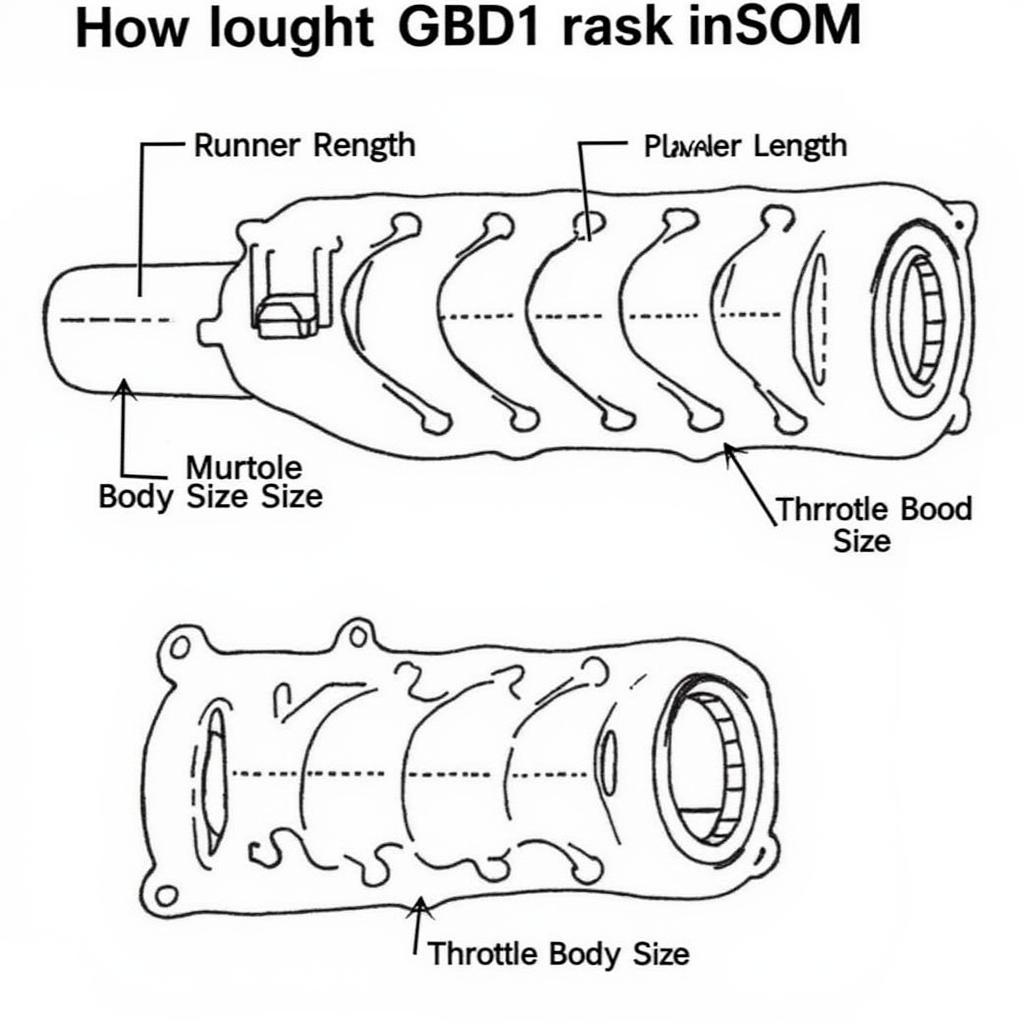When it comes to Honda’s legendary B-series engine, enthusiasts know that every modification matters. Whether you’re chasing horsepower gains or aiming for improved fuel efficiency, the intake manifold plays a crucial role. And if you’re rocking a B18C1 engine found in the iconic GSR Integra, you’ve likely come across the OBD1 vs. OBD2 intake manifold debate.
This article dives deep into the differences between these two manifolds, helping you understand their unique characteristics and determine the best fit for your GSR build.
Decoding the Acronyms: OBD1 and OBD2
Before we delve into the manifold specifics, let’s clarify the terms OBD1 and OBD2. OBD stands for On-Board Diagnostics, referring to the system that monitors your car’s emissions and performance.
- OBD1 represents the first generation of this system, implemented in vehicles from the early 1990s.
- OBD2, introduced in the mid-1990s, brought standardized diagnostic connectors and more sophisticated monitoring capabilities.
While the OBD system primarily focuses on emissions control, it indirectly impacts the intake manifold design due to its integration with the engine management system.
GSR Intake Manifolds: Unveiling the Differences
The core difference between OBD1 and OBD2 GSR intake manifolds lies in their runner design and throttle body configuration:
OBD1 GSR Intake Manifold:
- Shorter runners: These promote quicker air intake at low to mid RPMs, leading to better throttle response and increased low-end torque.
- Smaller diameter throttle body (60mm): Further enhances low-end torque due to increased air velocity at lower engine speeds.
OBD2 GSR Intake Manifold:
- Longer runners: These prioritize high RPM performance. The longer pathway allows for greater air volume at higher engine speeds, leading to increased top-end power.
- Larger diameter throttle body (62mm): Facilitates greater airflow at higher RPMs, complementing the longer runners for increased peak power output.
Choosing the Right Manifold for Your GSR
The choice between an OBD1 and OBD2 GSR intake manifold boils down to your performance goals and driving style.
Opt for the OBD1 manifold if:
- You prioritize low to mid-range power: This setup is ideal for street driving, where quick acceleration and low-end torque are crucial for a fun and responsive driving experience.
- You frequently drive in city traffic: The OBD1’s strength in low-end torque makes it easier to navigate stop-and-go traffic.
Choose the OBD2 manifold if:
- You crave top-end power: This setup excels at higher engine speeds, making it suitable for track days and highway pulls.
- You enjoy pushing your GSR to its limits: If you frequently rev your engine high, the OBD2 manifold will help you maximize horsepower in the upper RPM range.
“Choosing the right intake manifold can significantly impact your GSR’s performance characteristics,” says John Davis, a veteran Honda mechanic with over 20 years of experience. “Consider your driving style and desired powerband before making a decision.”
Beyond the Manifold: Factors to Consider
While the intake manifold plays a crucial role in your GSR’s performance, other factors contribute to the overall outcome:
- Engine Modifications: If your engine has significant modifications like upgraded camshafts or a larger throttle body, the intake manifold should complement these upgrades for optimal results.
- Tuning: After installing a new intake manifold, it’s essential to retune your ECU to ensure proper air/fuel ratios and maximize performance gains.
- Budget: OBD1 manifolds are generally more affordable in the used market, while OBD2 manifolds might require a higher investment.
Conclusion
The OBD1 vs. OBD2 GSR intake manifold debate ultimately boils down to your performance priorities. While the OBD1 shines in low-end torque and city driving scenarios, the OBD2 excels at higher RPMs and caters to those seeking peak power output. By understanding the strengths of each manifold and considering your driving style, you can make an informed decision that unlocks the full potential of your Honda GSR.
